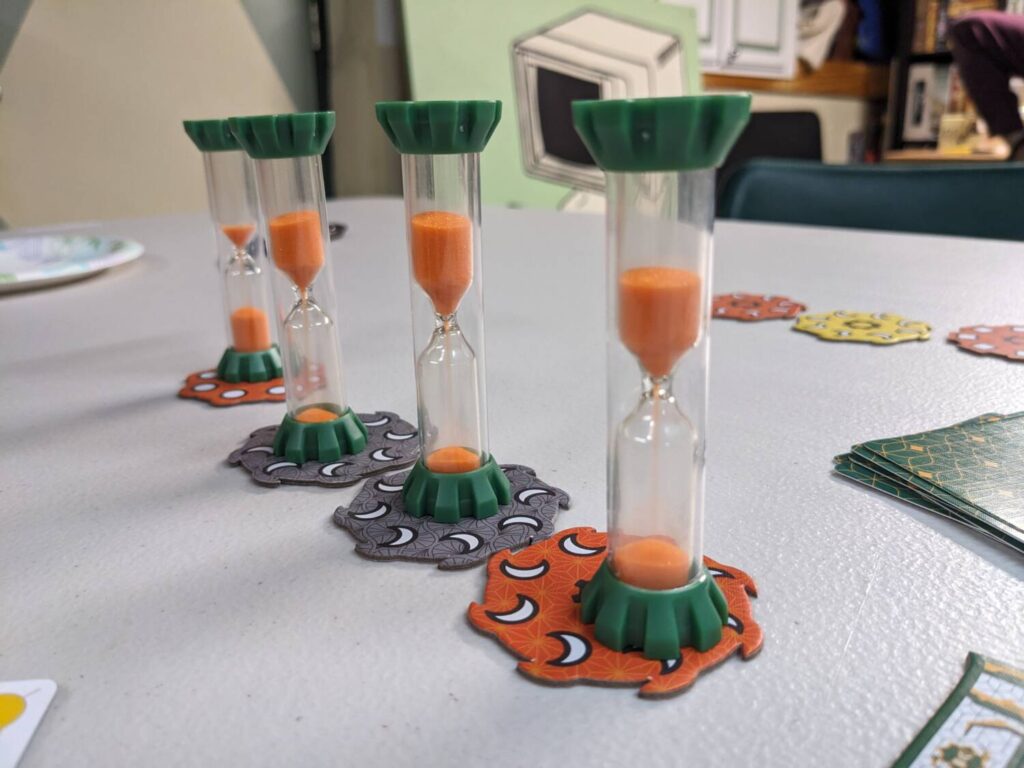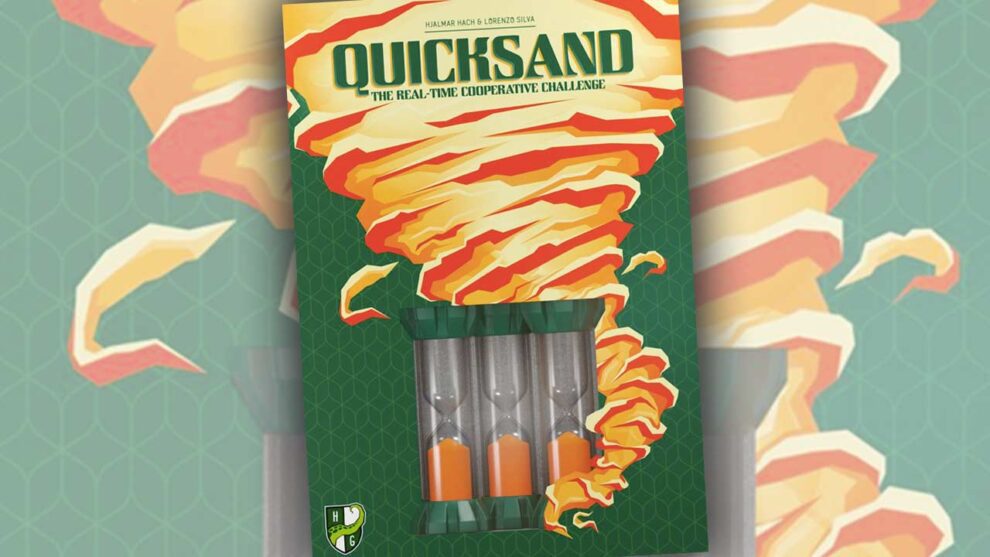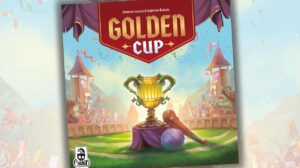Disclosure: Meeple Mountain received a free copy of this product in exchange for an honest, unbiased review. This review is not intended to be an endorsement.
The best thing about playing so many different games is that when you demo something new, you know right away if a new game is going to work or not.
Fellow Meeple Mountain contributor Andrew Lynch and I sat down with the marketing team from Horrible Guild at this year’s SPIEL 2023 event. During our meeting, our new marketing contact Davide showed us Quicksand, a new co-op sand timer game.
“Do you want to play?” Davide asked.
Never ones to turn down a chance to actually play a game at a trade show, we played what I thought would be one turn of the game. Turns out, we played an entire game of Quicksand in about eight minutes, won, and debriefed after the experience.
“This is a home run, even if I didn’t really understand everything until the very end,” I commented.
After picking up a review copy at the show, I played more games of Quicksand back in the US. Here’s what I didn’t see coming: I played Quicksand six times in about an hour, including two solo plays, a couple plays with three players, and a couple plays with four players.
Quicksand is still a home run.

Sand Timers
Quicksand is a real-time, cooperative hourglass flipping race for 1-7 players. My LONGEST game took about 10 minutes.
A series of tiles are laid out in a semicircle on the table, in a sort of track configuration. Past the end of those tiles, a few more tiles are laid out but separated from the main track by a marker indicating that those final tiles are “The Danger Zone.”
Each tile has a color—gray, yellow, or orange—and a shape around the edge, moons, circles or squares. At the start of the track, one sand timer is placed on each of the first 3-5 tiles. These sand timers vary—some have a ton of sand inside, some a little less, and one that has not nearly enough sand at all. (Let’s go with “slow”, “medium”, and “fast”.)
Each player is then dealt three facedown cards from a large deck. Each card has one of the tile colors, or a shape, or a wild symbol.
All timers are flipped—the spice must flow—then players can look at their cards and determine who should play first. A played card must match something underneath one of the timers. If it matches multiple tiles, then multiple timers get moved. Timers only move forward one space ahead to an empty tile. When a timer moves ahead to its next space, it is flipped, so that the sand is now flowing in the other direction.
If a card is played for a timer that has no empty tile spaces in front, that’s still useful—that timer gets flipped but doesn’t move it forward, giving players more time to make other moves.
The job of the team? Keep all of that sand flowing while moving all the timers into the Danger Zone, that area past the finish line. And doing that involves a whole lot of yelling.
Quicksand is my kind of game.

Managing Stress
Quicksand is a chaotic hoot. And even though the stress level can rise substantially over a time horizon totalling 10-12 minutes, it’s a game that people who struggle with real-time games can still handle and enjoy.
The teach takes 60 seconds. The one thing players (including me) have gotten hung up on during their first play is the idea that the card you are playing aligns with the location of a timer’s current tile, not the destination tile. Once that hurdle is cleared, it’s all systems go.
There are more than 20 different setup scenarios that adjust the number of timers in play, the length of the track in total tiles, and other tokens that spice things up. Davide from Horrible Guild handed me an additional promotional item timer that dials up the crazy to total insanity, with a timer so fast it is only for the strongest among us.

The description of Quicksand might remind you of another game with a similar sand timer mechanic, Kites: Time to Fly (Floodgate Games), which my man Tom Franklin reviewed last year. I played Kites with Floodgate team members at a convention, and I like Kites for many of the same reasons I like Quicksand.
But Quicksand is a slightly better game. Kites is simpler and requires a little less table real estate, but Quicksand has a longer tail thanks to the various scenarios. (That promo item also adds 20 additional scenarios.) I like the slightly forgiving nature of one element in Quicksand: when a timer runs out of sand, it is placed to the side of the tile track; a wild card can be played to get it back onto its previous tile. In Kites, if a timer ever runs out, it’s game over!
I didn’t realize that sand timer games were suddenly so hot; Floodgate is releasing Skyrockets, a game officially inspired by Kites, later this year. I picked up a copy at SPIEL so I’ll get that to the table soon to compare and contrast.
In the meantime, Quicksand is highly recommended. Horrible Guild has done great work over the last few years–the Railroad Ink games, The Great Split, Tiny Turbo Cars, Evergreen, and Dungeon Fighter were all fantastic. Quicksand continues the great success of this Italian publisher!












Add Comment